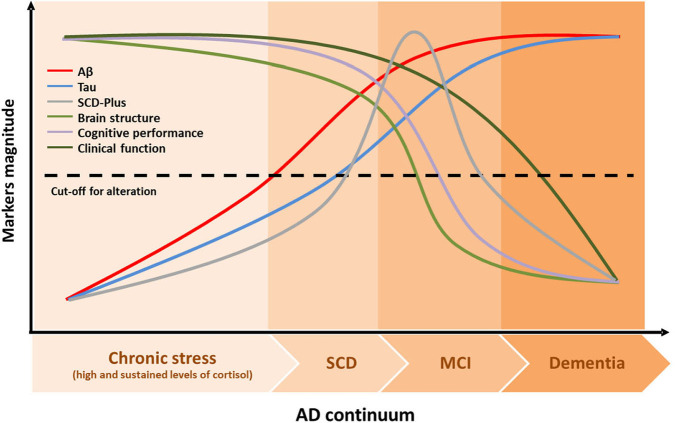Figure 1.
Theoretical dynamic of AD continuum. The AD pathological cascade model embodied the following assumptions in the temporal dynamic of the disease: (1) biomarkers become abnormal in a temporally ordered manner as the disease progresses; (2) Aβ identified by CSF Aβ42 or PET amyloid imaging occurs early in the disease, long time before the appearance of clinical symptoms; (3) tau-mediated neuronal injury identified by CSF appears later in the disease spectrum; (4) brain changes captured by structural MRI are the last biomarker to become abnormal; however, those brain changes would retain a closer relationship with cognitive performance than other biomarkers; and (5) cognitive and functional deterioration are the last symptoms that appear in this model. We hypothesize that there would be a third curve namely SCD-Plus that would occur after tau deposition, but just before brain structure starts changing, in the preclinical AD stage. Chronic stress defined with elevated and sustained cortisol levels over time could precede and act as a trigger of the AD pathological cascade. Aβ, β-amyloid; AD, Alzheimer's Disease; MCI, Mild Cognitive Impairment; SCD, Subjective Cognitive Decline.

